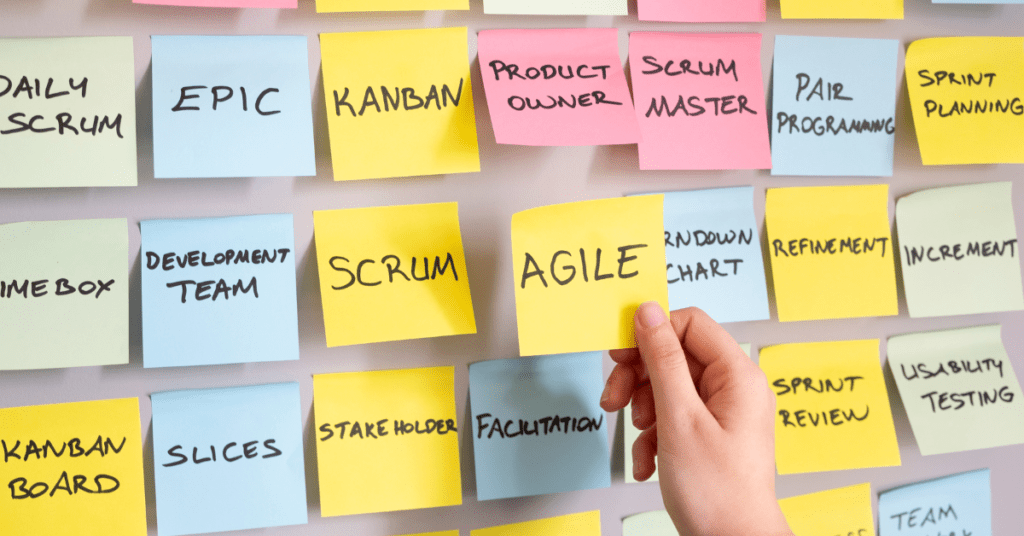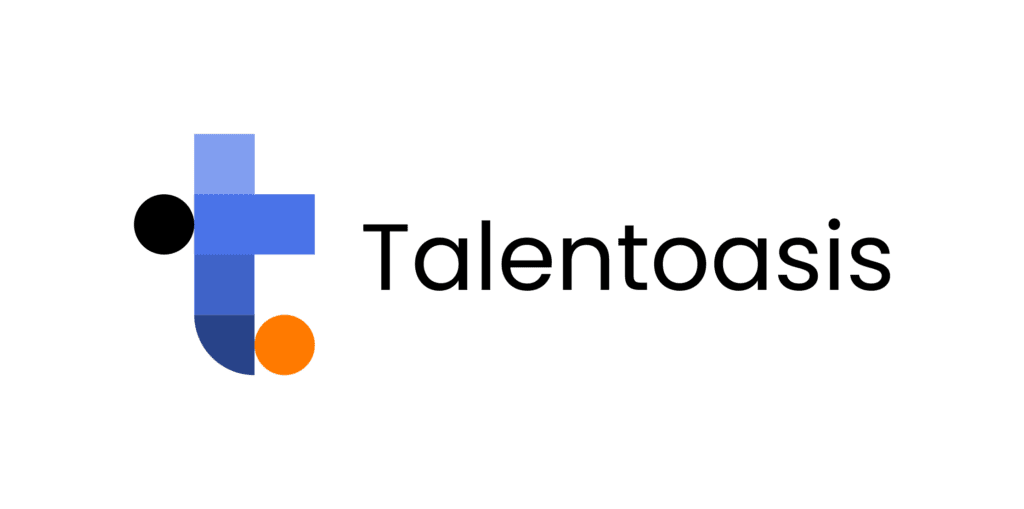What is Agile Methodology

Agile methodology is a project management and product development approach that prioritizes agile, which means flexibility, collaboration, and customer satisfaction.
Agile methodology, often called “Agile,” is renowned for its adaptability and resilience in uncertain and fast-changing environments.
Initially designed for software development, Agile has successfully extended its reach into diverse industries, including finance, healthcare, and marketing.
What is the Agile Manifesto?
Crafted in 2001 by a consortium of software development practitioners, the Agile Manifesto outlines Agile methodology’s core values and principles. It serves as a guide for teams and organizations, offering project management and product development direction. This document emerged as a response to the limitations of traditional project management approaches and has since become widely accepted as the Agile blueprint.
Common Agile Frameworks for Business
Agile frameworks are practical methodologies and approaches aligned with the principles and values outlined in the Agile Manifesto, serving as tools for implementing Agile principles in project management and product development. The manifesto consists of four fundamental values and 12 principles. They all emphasize collaboration, flexibility, customer focus, and continuous improvement. Here are a few Agile frameworks:
Scrum
A popular framework emphasizing short, time-boxed iterations (sprints) with defined roles and ceremonies. According to the State of Agile Report 2021 by VersionOne, Scrum is the most used Agile methodology, and about 66% of Agile users implement Scrum.
Kanban
Focuses on visualizing workflows and limiting work in progress to optimize efficiency. It is particularly effective in industries where demand and priorities can change rapidly. As per the latest State of Kanban Report, over 41% of organizations are implementing Kanban in more than 10 teams, and an impressive 86% of respondents intend to further extend their Kanban initiatives in 2023.
Lean
Lean is short for lean manufacturing. It combines Agile principles with startup methodologies, strongly focusing on experimentation and validated learning. Originally derived from manufacturing, these principles aim to minimize waste while maximizing value. According to MEP (Manufacturing Extension Partnership), lean manufacturing has led to productivity improvements ranging from 10% to 30%, along with remarkable achievements such as a 90% reduction in work-in-progress and a 50% increase in space utilization.
SAFe (Scaled Agile Framework)
As stated on the ScaledAgile website, Scaled Agile Framework or the SAFe is the world’s most trusted system for business agility. Designed for larger organizations, it scales Agile principles to coordinate multiple Agile teams. SAFe is designed for large organizations looking to scale Agile practices across various teams and departments.
DSDM or Dynamic System Development Method
DSDM, created in 1994 and one of the earliest agile methodologies, is an Agile project delivery framework focusing on delivering results quickly while strongly emphasizing business needs and stakeholder involvement. It is particularly suited for projects where requirements are subject to change and must be adaptable throughout development.
XP or Extreme Programming
An Agile software development methodology emphasizing close collaboration between the development team and the customer. XP was introduced by Kent Beck in the late 1990s and is known for its focus on delivering high-quality software quickly and efficiently.
FDD or Feature-Driven Development
FDD focuses on delivering software through a feature-centric approach. Jeff De Luca and Peter Coad developed it in the mid-1990s.
Which Agile is Right for Your Business?
Agile methodologies have demonstrated their effectiveness in improving business outcomes, with statistics showing that agile projects are 28% more successful than traditional methods.
However, choosing the right Agile approach for your business depends on several factors, including your needs, industry, and organizational constraints. For structured, time-boxed iterations, Scrum is an excellent choice. Kanban is ideal for continuous workflows and variable priorities, fitting support teams and industries with unpredictable demand. SAFe is designed for large organizations with complex projects that require scaled Agile practices.
Benefits of Agile in Business
According to Agile Statistics by Zippia, Agile methodologies have contributed to the success of 98% of businesses. Additionally, a survey found that 78% of U.S. government executives believe Agile practices have significantly impacted their organizations.
These statistics prove that Agile practices produce products and services that meet their needs and preferences better. Agile’s iterative approach speeds up development cycles, enabling businesses to bring products to market more quickly, gaining a competitive edge. Agile’s adaptability allows firms to identify and address risks early in the project, reducing the likelihood of costly failures. Continuous testing and integration in Agile can lead to higher product quality, reducing post-release issues and costs.
Challenges in Implementing Agile
Implementing Agile within an organization can be a transformative journey but has its hurdles. 34% of organizations need more support for agile adoption. The same study says that 30% of organizations face a minimum of 10 agile adoption challenges, which revolve around regulatory compliance, lack of proper collaboration and shared knowledge, using traditional methods, lack of skills and insufficient interest or training.
Conversely, successful Agile adoption requires understanding Agile principles, adequate training, and addressing cultural shifts. When Agile is understood and implemented correctly, it becomes a powerful tool. Overcoming these issues demands leadership commitment, ongoing training, cultural adjustments, and adaptability. Recognizing and addressing these obstacles is essential to a successful Agile transformation.
Best Practices for Agile Success
Achieving success with Agile methodologies requires more than just adopting a framework; it involves best practices that boost collaboration, adaptability, and continuous improvement.
Ensuring team members and stakeholders receive comprehensive Agile training, including programs and certifications like CSM and PSM, can significantly contribute to success. Consistent close collaboration using relevant Agile metrics like velocity, lead time, cycle time and more can have a similarly positive impact. A culture of continuous learning and skill diversification while encouraging self-organization and responsibility among team members can also make a difference.
A staffing agency like Talentoasis can provide skilled Agile professionals when in-house expertise is lacking, ensuring a smoother transition to Agile methodologies.
Future Trends in Agile
Remote work is here to stay, and Agile will continue to evolve to accommodate virtual teams. Because of this, more industries will adopt Agile as its benefits become increasingly apparent with no downside. As businesses grow, Agile methodologies continue to adapt, and future trends include combining agile with other methods to optimize development and operations.

